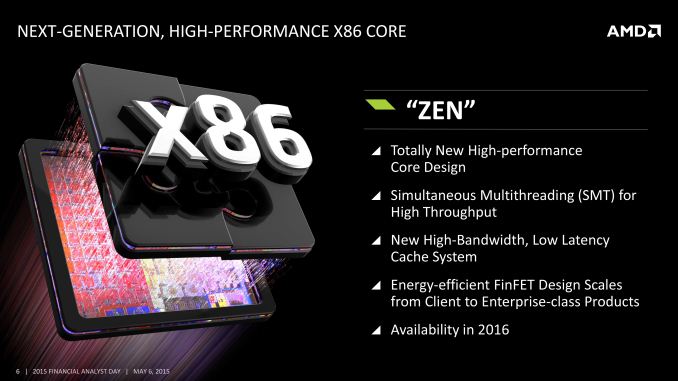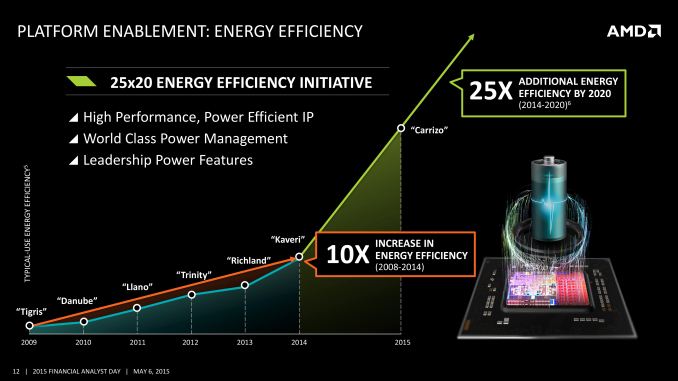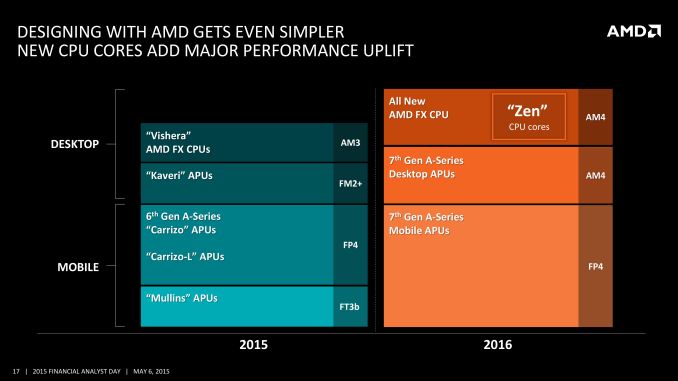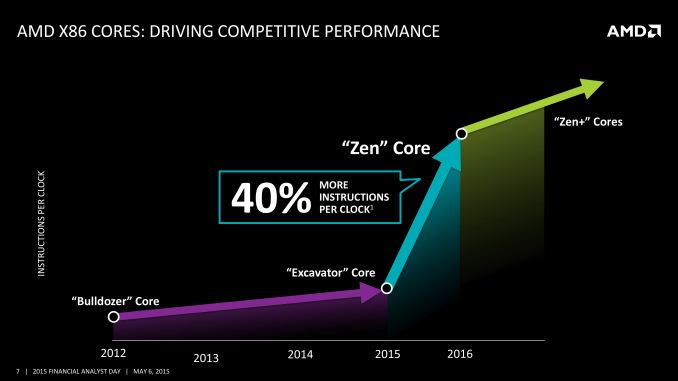AMD laid out the company’s future to their investors at their financial analyst day, yesterday, and what a future it is. While the company denied the legitimacy of the recently leaked investor presentation, which supposedly offered detailed specifics for their upcoming ‘Zen’ CPU architecture, they did offer some worthwhile details of said architecture.
AMD’s ‘Zen’ is a completely new design, built from the ground up. It will feature SMT (Simultaneous Multithreading), which is similar to Intel’s Hyper-Threading, which allows each CPUI core to process multiple threads, essentially behaving like multiple cores with shared resources. The architecture will also feature a new high-bandwidth, and low-latency cache system, as well as a currently unnamed FinFET manufacturing process, which will provide a major improvement in energy-efficiency.
We’d wager that AMD will continue their longstanding relationship with GlobalFoundries, who will be jump-starting their 14nm production next-year as part of their partnership with Samsung to utilize the company’s 14nm FinFET process.
Like the earlier leaked slides reported, AMD will in fact be unifying their desktop CPU platforms with a single socket, however unlike those previous reports stated this new socket will not be called “FM3” instead it will be “AM4” which will be compatible with both Zen-based FX CPUs, and the company’s 7th generation A-Series desktop APUs. 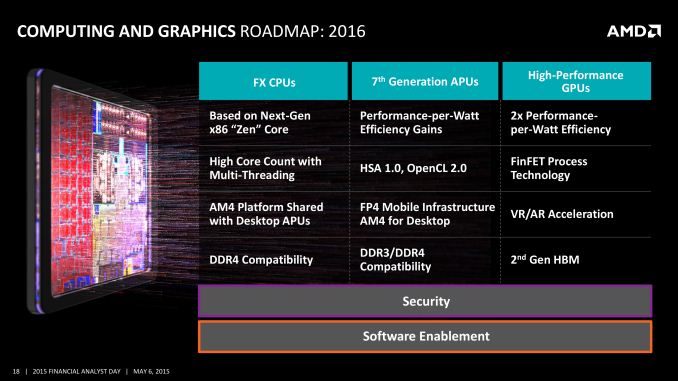
This new unified platform will also offer compatibility with both DDR3 and DDR4 memory, if using an APU, and DDR4-only when using an FX CPU.
AMD says that the first Zen based processor to be released will be the high-end desktop CPU. They’ll be targeting the high-end market to start, and then trickling down to APUs and lower-end products.
Easily the most impressive of AMD’s claims, is that ‘Zen’ will offer over 40% higher IPC (instructions per clock) than previous-generation “Excavator” cores. AMD has had major issues in the past with single-threaded performance, and has been unable to compete with Intel in that respect.
While these claims are not a clear indicator that AMD will be able to improve single-threaded performance greatly enough to compete with Intel on a 1-1 basis, it is still great to hear that they’ve shifted their focus away from the lower-IPC/higher-clockspeed strategy that they’ve employed since the Bulldozer architecture.
 Technology X Tomorrow's Technology Today!
Technology X Tomorrow's Technology Today!

